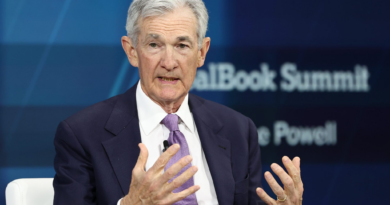The gig economy has been steadily booming over the last decade. Millennials and Gen Zers helped it reach new heights in 2023
It’s that time of the year where the sun sets at an ungodly hour, workers are checked out until January, and people post “in” and “out ” lists to set the tone of the new year. What’s increasingly “in” for the workforce: freelancing. What’s “out:” sticking to the formulaic career trajectory and having to grin and bear it at your 9-to-5.
So finds Upwork Research Institute’s latest study of 3,000 professionals, which revealed that 64 million Americans freelanced this year—4 million more than last year and an all-time high since Upwork began looking at such data nearly a decade ago. That comprises 38% of America’s workforce and contributes $1.27 trillion in annual earnings to the economy, it finds.
Such growth has been a long time coming. When Upwork started tracking freelance work in 2014, there were only 53 million freelancers. Every year since then, 1 million more Americans began to freelance, per the data. The rise has also helped the economy grow by $557 billion between now and then.
“The increase in the number of people freelancing we’ve seen over the past twelve months is really just a snapshot of the much larger growth trend we’ve seen over the past decade, as professionals seek alternatives to the rigidity of the traditional 9-to-5,” Margaret Lilani, VP of talent solutions at Upwork, tells Fortune. “They are finding in freelancing what they really desire for their careers: greater flexibility, autonomy and earning power.”
Of course, Upwork has some skin in the game since they’re a freelancing platform. But employees are looking for something their companies aren’t giving them these days. Many workers want to hang onto the flexibility and agency they found in the pandemic; as return to office mandates increase, the idea of becoming one’s own boss to work how, where, and when has become more appealing. And in an economy that feels strained, especially for underpaid younger individuals during an age of inflation, many Gen Zers and millennials are especially turning to the gig economy to make ends meet in a way that their job alone won’t do.
The freelancing young adult
It makes sense, then, that younger generations are leading the way when it comes to freelance work as a proportion of their cohorts—52% of all Gen Zers and 44% of all millennials freelance worked this year. (But among freelancers overall, millennials are highest represented, followed by Gen Xers).
It’s no surprise for the battle-scarred millennials, who has struggled to build wealth while grappling with two recessions before the age of 40 and staggering student debt. And while not all of Gen Z has yet to enter the workforce, the ones who have seem to be quickly learning that one paycheck isn’t always enough to cover the bills and that the traditional career trajectory isn’t the only path to success. The wave of layoffs this year has made them wary of the corporate man willing to let go of workers during tough economic times and left turning to freelancing side hustles for extra income and stability.
Many young adults feel it’s difficult to stay afloat in today’s landscape, often filled with a sense of economic dread. Even after adding gig work, Gen Zers and millennials still aren’t always able to get ahead; Bank of America finds that their credit and debit spending growth is still low despite an uptick in gig work, indicating that they still don’t have a ton of discretionary income despite bringing in more cash.
Some are turning to the freelance route full-time in the hopes that it will be more lucrative. “Younger professionals who, as digital natives raised with the internet and social media, are creating a new blueprint for career opportunities outside of the traditional corporate world,” says Lilani, explaining that their “uncertainty around college, internships, and the job market are coinciding with a mindset shift in how people are thinking about work.”
Most of these freelancers (47%) are performing knowledge or skilled work, while 23% are forging a new pathway by entering the creative content industry. No matter the type of gig they do, most are forecasting an optimistic future—Upwork finds that 85% predict that “the best days are ahead for freelancing.” Reporting that they’re positive about potential career growth, wage increases, and prospective opportunities, these freelancers sound especially cheery compared to the silently fuming or simply fatigued traditional employee counterparts.




